Young drinkers lead the trend for alcohol-free beer
- Published
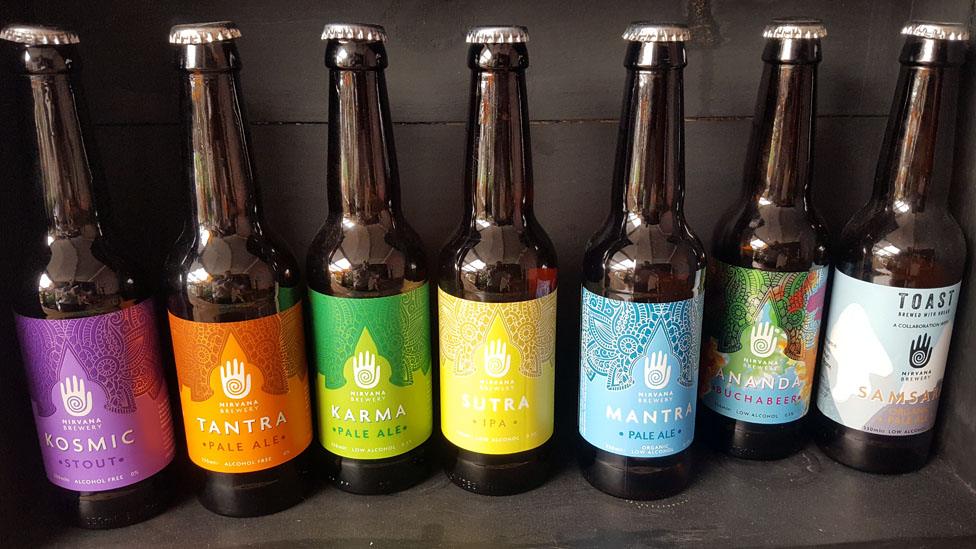
There is now a growing number of breweries that only sell low or alcohol-free beer
If Becky Kean ever wants to organise a drunken party at her brewery, she'll have to buy in beers from somewhere else.
This is because Becky's company, London-based Nirvana Brewery, only makes alcohol-free beer.
Currently it brews seven different flavoursome types, from pale ales to a stout, and one with added green tea. And none of them will get you even remotely tipsy.
Go back in time, perhaps a decade, and Nirvana would be viewed with incomprehension, or even ridicule, by many people. Yes alcohol-free beers have existed for a long time, (in the UK Guinness' trailblazing Kaliber lager was introduced in 1986), but they were more often low-selling peripheral products.
Always a pale lager, and usually not very pleasant to drink, they would be forlornly sipped by the designated driver. While he or she waited impatiently for their inebriated friends to finally agree to go home.
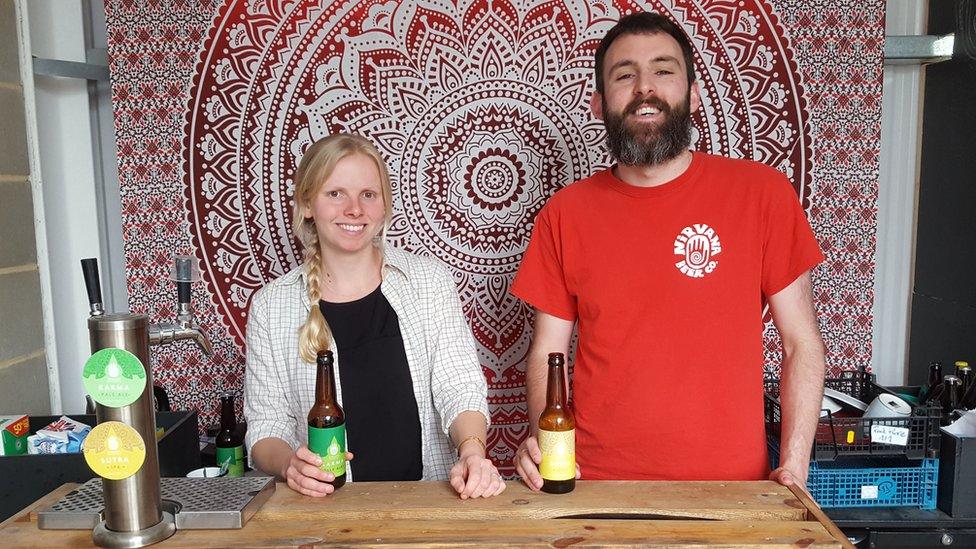
Becky Kean and her brother in law Andrew Keresey were inspired to set up Nirvana so that her alcoholic dad had decent beers to drink
Thankfully, all this has changed in recent years, as the huge growth in the number of craft breweries on both sides of the Atlantic has coincided with more people choosing to drink less alcohol, or even none at all., external
This has resulted in a big increase in the number of alcohol-free or low alcohol beers of all styles being available to buy, particularly in the UK. And many taste pretty good.
Sales are certainly now booming. According to one report, UK sales of low and alcohol-free beers jumped 28% in the year to February 2019, compared with the previously 12 months., external
This sales growth is replicated in Germany, where as many as one in 15 beers sold is now estimated to be alcohol-free., external Meanwhile, in Spain, which is the world's largest consumer of alcohol-free beer - overwhelmingly in the form of ice-cold lagers - they account for 14% of all sales., external
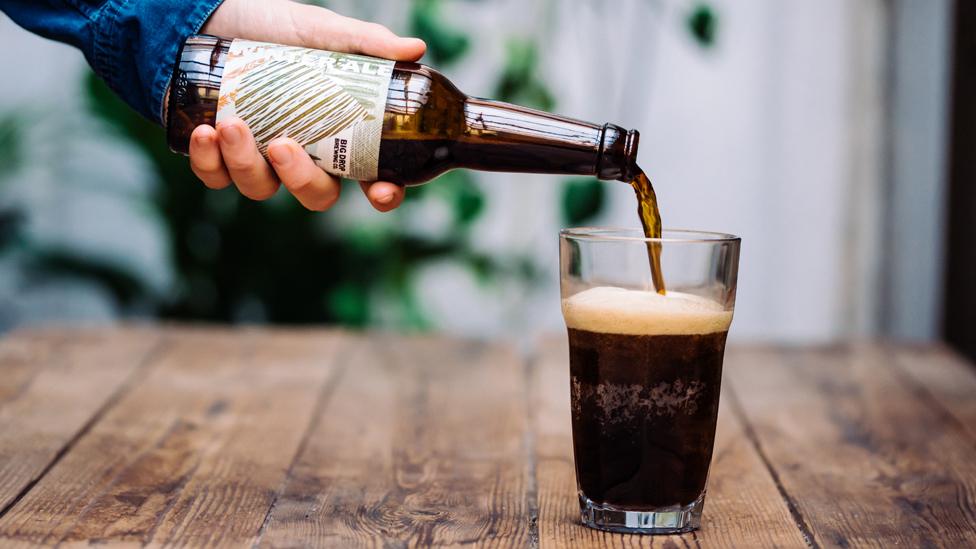
Alcohol-free beers are now available in most beer styles, and not just insipid pale lagers
Given such a vast and rising market, it is not surprising that a growing number of small craft breweries like Nirvana are choosing to only make low or alcohol-free brews.
"We only started in 2017, and we are now making close to half a million bottles a year," says Becky, 29. "And we have just started exporting to Scandinavia and Switzerland. And we are looking at Asia and South America as well. Our sales have grown massively.
"We were inspired to set up the brewery because my father is a recovering alcoholic, and we wanted him to still be able to drink a delicious beer. For a lot of breweries alcohol-free beer is just an afterthought, but we wanted it to be our sole focus."
But what exactly is an alcohol-free beer? This may sound like a stupid question, but in the UK it is unfortunately complicated. And you have to pay close attention to two different, but similar looking percentage figures.
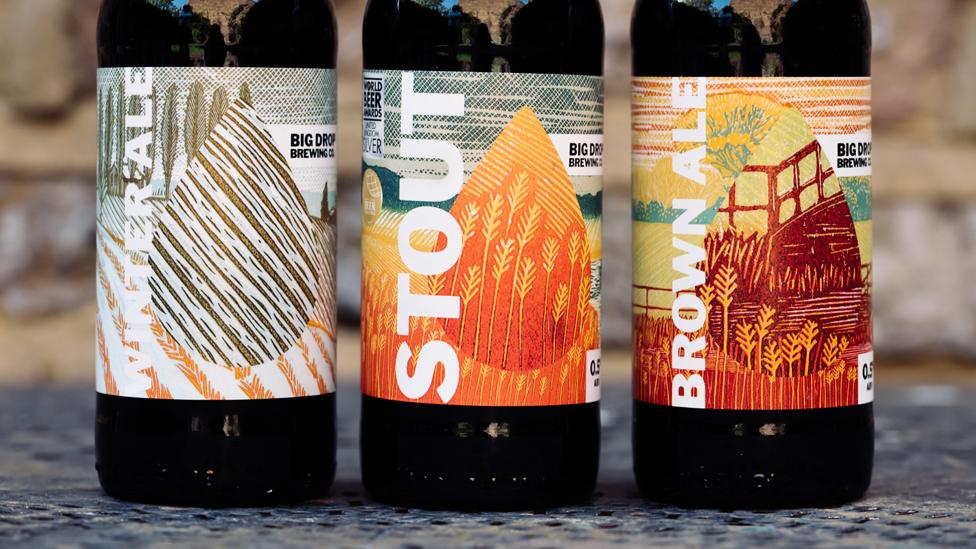
Big Drop Brewing now ships 40% of its beers overseas
In most of the European Union, and the US, a beer can be called alcohol-free it if contains less than 0.5% alcohol. Whereas in the UK a beer brewed within the country can only be labelled alcohol-free if it has less than 0.05% alcohol. If a UK brew is 0.5% it can only say it is "de-alcoholised". As that is apparently off-putting to drinkers, most British brewers chose to say "low alcohol" instead.
If this wasn't already annoying enough, 0.5% beers from abroad can call themselves alcohol free when sold in the UK - they don't have to amend their labels.
If reading the previous few sentences has made you need a stiff drink, Rob Fink, co-founder of the Big Drop Brewing Company, would likely understand.
His London-based brewery also only makes low and alcohol-free beers, exporting 40% of them to the Netherlands, Denmark, Finland, Sweden and Canada.
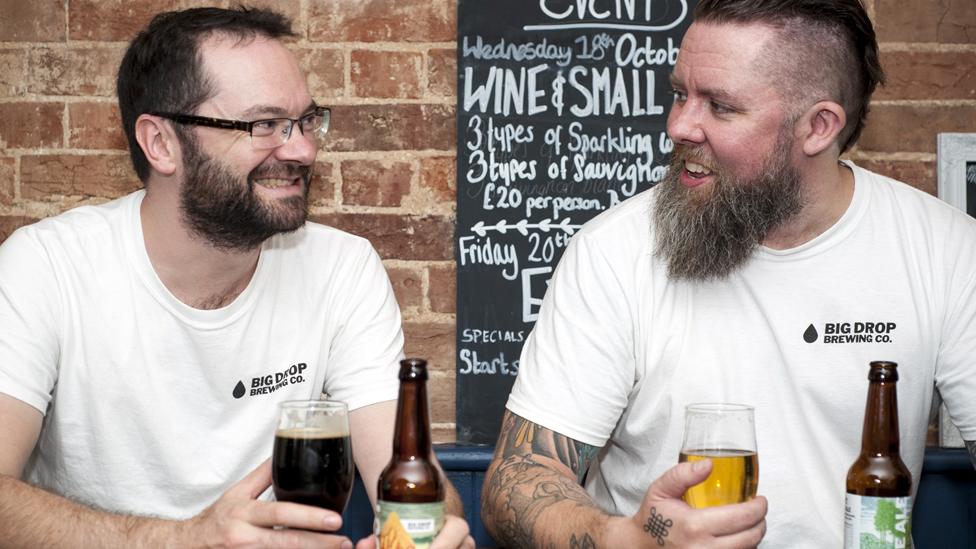
Big Drop's Rob Fink (left) wants UK rules regarding alcohol-free beers to be relaxed
"You cannot get drunk on a 0.5% beer no matter how many you drink," says the 40-year-old. "It has no effect on a person whatsoever. To put this into context, a ripe banana or slice of bread can contain 0.5% alcohol.
"This is important, because at 0.5% you can brew a really good quality beer, but at 0.05% it is far more difficult - you have to rip out the alcohol, which removes a lot of the flavour."

Global Trade

Across in the US, the alcohol-free beer sector is very much more in its infancy than the UK and the rest of Europe, according to Bill Shufelt, co-founder of Athletic Brewing. But he says it is now growing quickly.
His Connecticut-based business was set up in 2017 to only make alcohol-free brews.
"The reaction of some people at the beginning was that we were crazy. There were jokes at our expense," says the 36-year-old. "But that always changed as soon as they tasted the beers."
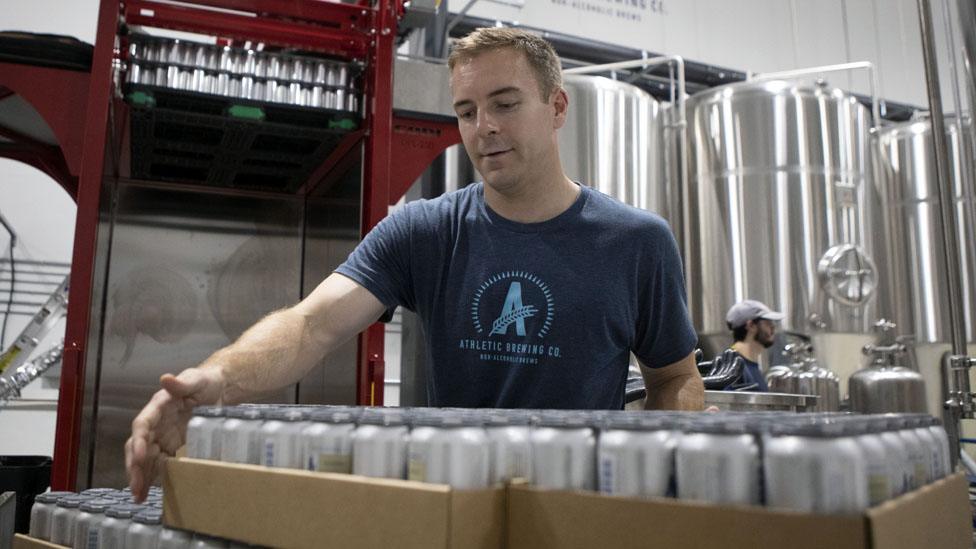
Bill Shufelt of Athletic Brewing says that some people laughed when he first told them about his plans to only make alcohol-free beers
Athletic now sells its beers across the whole of the US, and has also started exporting them to the UK.
Beer writer Jeff Evans says that the big rise in sales of low and alcohol-free beer is being led by young adults.
"Young drinkers have a less rigid approach to alcohol," he says. "They are happy to drink it when in the mood, but at other times will happily do without.
"Young drinkers are also closely associated with the craft brewing industry, which is known for its experimentation and its focus on flavour. Bring the two together and you have what is happening today - growth in the low and no-alcohol beer sector."
Mr Evans adds that "today's brewers, with their creativity and flexibility" have found ways to create drinkable, "interesting" alcohol-free beers that make "an excellent alternative" to regular brews.